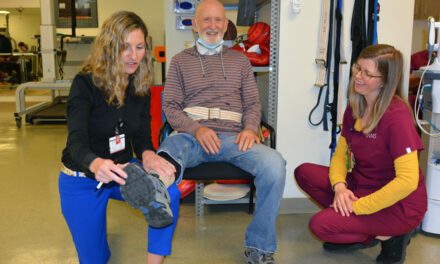Runners may be less prone to injury while barefoot than while wearing pricey running shoes, according to a recent study.
A possible reason for this is that running “barefoot” or in shoes with minimal cushioning may spur runners to change their strides and landing patterns to prevent repetitive heel pain and stress fractures.
The study appears in Journal of the American Academy of Orthopaedic Surgeons.
A media release from the American Academy of Orthopaedic Surgeons explains that most distance runners who use cushioned running shoes run heel-to-toe, or in a rearfoot strike (RFS) pattern. This action is associated with longer strides and excessive load force—up three times the runner’s body weight—on the lower leg, knee, and hip. This leads to bone and soft-tissue injuries, tibial stress fractures, and severe heel pain, such as plantar fasciitis.
Minimalist running shoes have thinner soles and less cushioning and are more flexible than conventional runners’ footwear. Advocates believe these shoe changes alter running so the front or middle of the foot strikes the ground first—a forefoot or midfoot strike (FFS and MFS)—which reduces load stress on the knee, lower leg, and heel. Flatter foot placement dissipates load impact on the heel, the release continues.
“Evidence to date shows that changing gait patterns, not shoe selection, is the best intervention to lower the injury prevalence in runners,” says lead author and orthopaedic surgeon Jonathan Roth, MD, with Fort Belvoir Community Hospital in Virginia, in the release.
“Minimalist shoes may give better feedback to runners and allow them to focus on changing their gait, but not everyone does, and this could lead to more injury,” he adds.
Roth adds in the release that the increasing acceptance of minimalist running has outpaced medical evidence of its benefits. Studies have suggested, however, that with less-cushioned footwear, runners spontaneously transition from the RFS to the FFS gait pattern.
According to the release, other findings from the study include: Barefoot and minimalist running is not injury-proof and poses risk for metatarsal (toe) stress fractures, plantar fasciitis, and puncture wounds; Runners can transition to the FFS pattern in any shoe with appropriate training; and Barefoot and minimalist running is an emerging phenomenon that requires further exploration of its orthopedic implications to identify true long-term benefits and risks.
Roth advises runners who are interested in exploring minimalist running shoes to provide more feel and less of a heel-to-toe offset, and to allow easier landing midfoot to forefoot, “should consider themselves as non-runners and start over by walking and gradually adding running distance week to week.”
“This will help assure proper transitioning to build strength, flexibility, stability, and endurance around the foot and ankle,” he adds.
Transition from a RFS to FFS gait pattern should be a gradual process—over many months. Runners should expect to run minimal mileage when transitioning and always remember the 10% rule when increasing in distance. An abrupt switching of gait patterns can lead to an increase in other repetitive stress injuries if not done correctly, the release explains.
[Source(s): American Academy of Orthopaedic Surgeons, PR Newswire]





